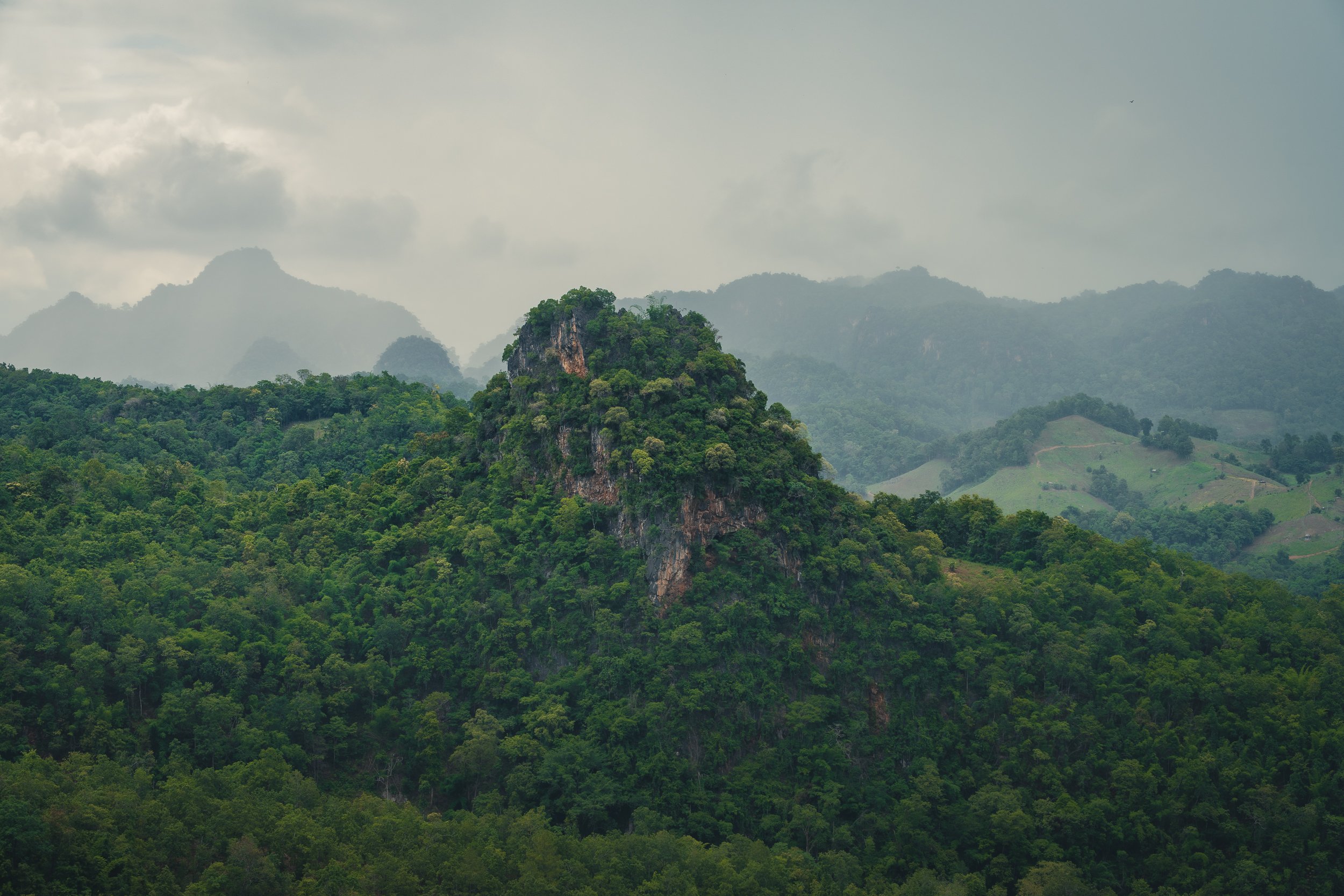Telling Stories with Photos
Lessons from thailand
As I write this, I am sitting in a delightful Chinese restaurant in the very picturesque Ban Rak Thai, a remote Yunnanese village tucked away in the mountains of Northern Thailand. This small, serene town—rich in culture and framed by misty hills—feels like the perfect place to reflect on one of photography’s most powerful tools: storytelling.
Photography, like any visual medium, is ultimately about story. More than camera settings or compositional rules, it’s the narrative within an image that gives it meaning. A technically perfect photo may be beautiful, but it’s the story it tells that makes it memorable.
As a literature lover, I often think about photography through a literary lens. One theory I find particularly relevant is “The Author is Dead,” popularised by French critic Roland Barthes. The theory suggests that a work should be separated from its creator—that the author’s intent is irrelevant, and only the reader’s interpretation matters. The meaning lies not in the creator’s background or motivations, but in the text itself—or in our case, the image.
This idea is liberating. It means your photos should be able to stand on their own. No caption. No explanation. Just the frame—and the story it tells.
Over the last few days in Ban Rak Thai, I’ve taken a number of photos that have helped me think more deeply about how we can embed stories into our photography. Below, I’ve chosen five images that each demonstrate a different narrative technique.
1. Juxtaposition: the Sacred and the Ordinary
One photo I took on my journey here captures some young Buddhist monks, sitting by a window and completing his homework. The story, for me, lies in the juxtaposition: the sacredness of monkhood contrasted with the everyday reality of childhood.
There’s something powerful about this set of images. It reminds us that beneath the robes and rituals, these boys are just kids. The photo of another monk, casually scrolling through his phone, furthers that idea—blending the ancient with the modern, the spiritual with the mundane.
Even the lighting helps emphasise the story. Harsh window light cuts through deep shadows, visually reinforcing the sense of contrast and duality. That’s what juxtaposition does best—it invites us to reconcile difference within a single frame.
After completing their homework, the monks head outside to cut shave each other’s scalps, while guarded by a very protective dog - that may have barked at me and my camera more than once. I feel as though these images capture another side to monkhood, expanding on that “normalcy narrative” explored in the previous set. It’s a storytelling technique that I find very compelling.
2. foreground and Context: Giving “Nice” Places a Narrative
Travel photographers will know the feeling: arriving at a beautiful lookout, taking the photo, and then realising... it's just fine. Technically sound. But forgettable.
That was exactly my experience at a stunning mountain viewpoint here in Northern Thailand. The photo looked okay—but it lacked a sense of story.
Then I took a second photo, this time from inside a nearby café. Two silhouetted figures sat at a table, sharing a quiet moment while looking out at the same view. Suddenly, the image came alive. Now, we’re not just looking at a landscape—we’re witnessing people experiencing that landscape. The story is both literal and symbolic.
Visually, the foreground café scene adds context and scale. It creates layers—foreground, midground, background—and guides the eye naturally to the mountain vista beyond. And most importantly, it turns a “pretty” photo into a meaningful one.
3. Mood Through Colour and Light
Mood is one of those elusive, subjective things that makes or breaks a photo. And while it can be influenced by many factors, colour and lighting are two of the most powerful tools at your disposal.
Typically, warmer tones and softer lighting evoke feelings of happiness or nostalgia, while cooler tones and harsher shadows tend to feel more mysterious or dramatic.
One of my favourite images from Ban Rak Thai was taken at night. While I captured plenty of daytime shots with textbook lighting, this nighttime scene—with reflections shimmering on the water and warm lights glowing in the dark—best captured what it felt like to be here.
Post-processing helped too: I used masks to gently reduce clarity and dehaze near the brightest light sources, giving the image a dreamy, timeless quality. Sometimes, the mood says more than the subject itself.
4. The Mona Lisa Gaze: Letting the Subject Speak
Another photo I took is technically very simple: just a boy, framed in a doorway, looking directly at the camera. But that expression? It pulls you in.
I like to call this the Mona Lisa effect. You strip away distractions—use a shallow depth of field, isolate your subject, frame thoughtfully—and let the expression do the talking.
In this image, the boy's direct gaze becomes the story. His face is filled with quiet intensity, and we, the viewers, are left to interpret what that means. This is storytelling through subject alone. No action. No props. Just emotion and mystery.
Final Thoughts
The best photos don’t just show us what something looks like. They tell us what it feels like. They invite us into a moment, a perspective, a question. Whether through contrast, layering, mood, subject, or mystery, storytelling is what turns good photography into great photography.
Ban Rak Thai has been a beautiful place to reflect on these ideas—not just because of its landscapes, but because it feels like a story waiting to be told. And I hope, with these images and thoughts, I’ve told at least part of it.











